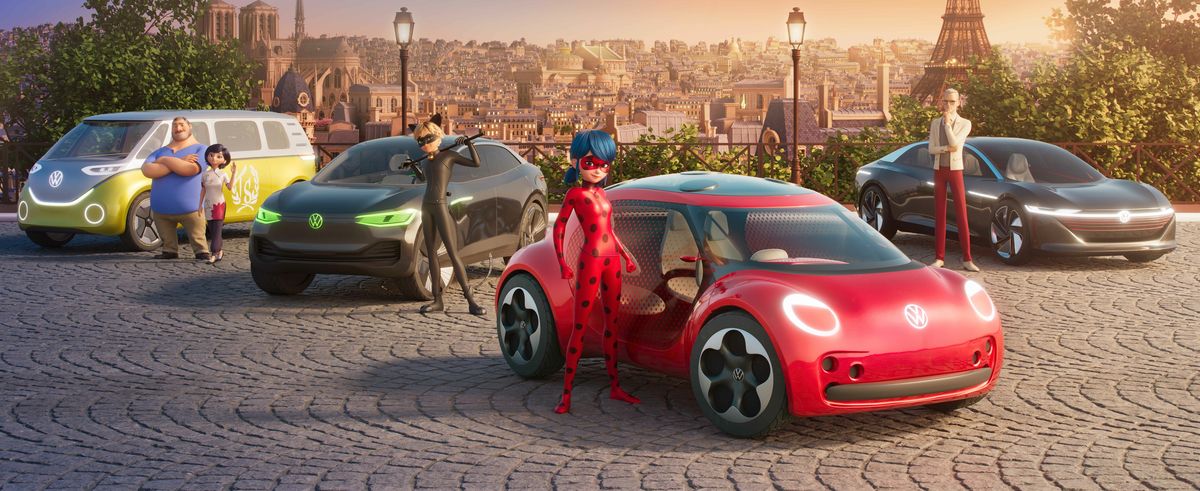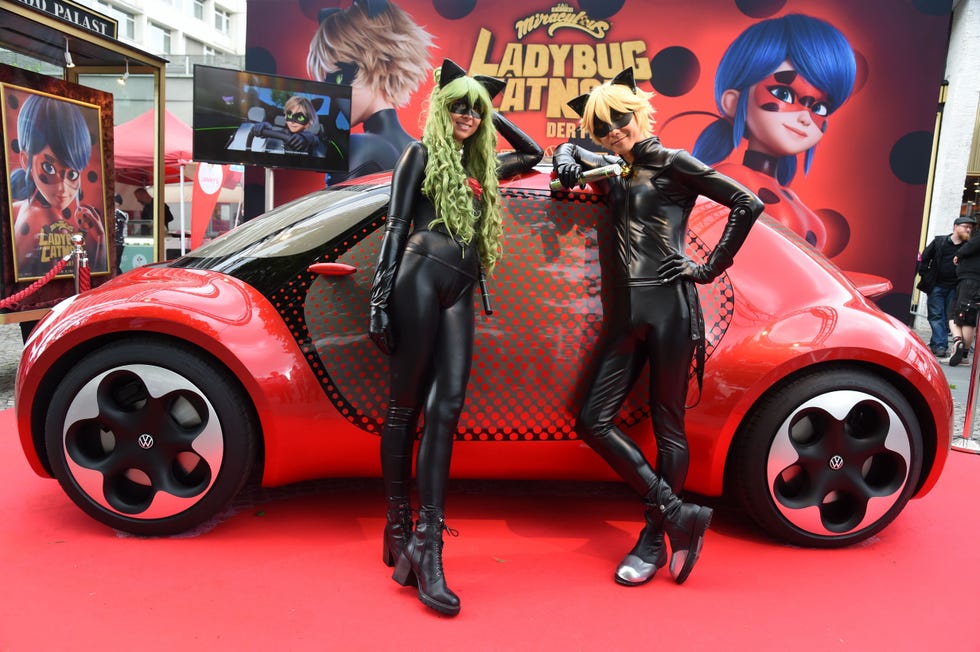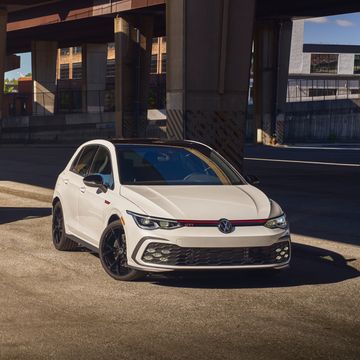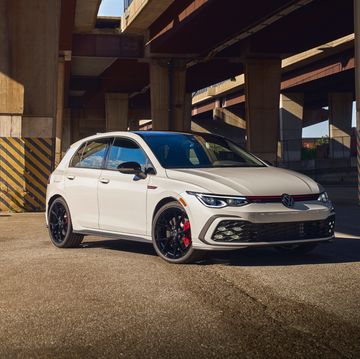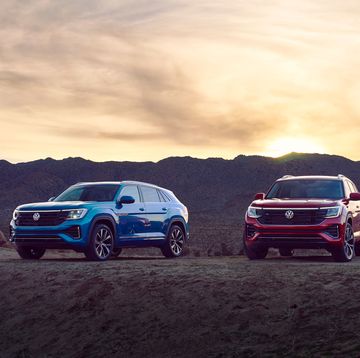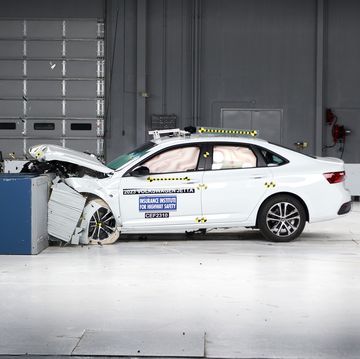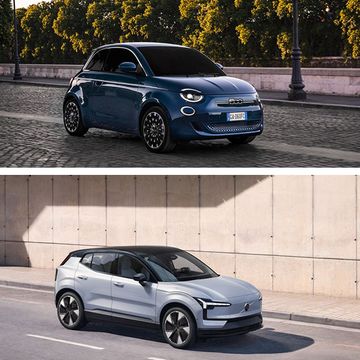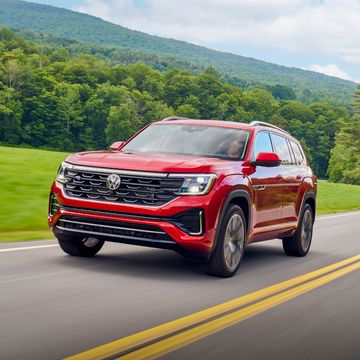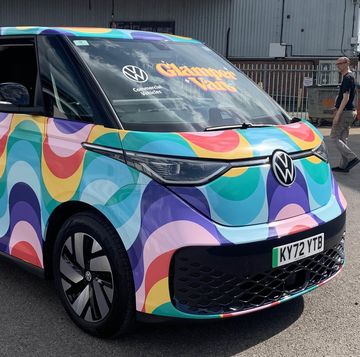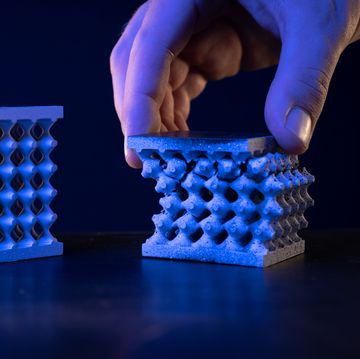- VW creates full-scale Beetle EV concept based on the animated car from Miraculous: Ladybug & Cat Noir, The Movie, which features a whole lineup of electric VW models.
- The Beetle exited production as an internal combustion model in 2019, but rumors about its return as an EV had been around for years.
- VW is about the test the waters for retro-style vehicles with the scheduled arrival of the ID. Buzz in 2024.
The arrival of the Volkswagen ID. Buzz, now just a year away, is easily the longest-awaited EV from the automaker, having been revealed as a concept in 2017—a different era in more ways than we can count. For instance, way back then we were promised not only self-driving taxis by now, but also flying taxis. And Twitter was still called Twitter.
Keen observers of automotive fashion will remember that the retro Bus idea dates back even further, to the well-received 2001 Microbus concept, which wasn't intended as an EV at all, but was far more exciting visually than the Eurovan VW was still selling stateside. And it was also far more more cheerful than the later Chrysler-shared VW Routan minivan that followed.
The upcoming ID. Buzz certainly looked back at the 2001 concept for inspiration, but VW also tried to walk a fine line between making it retro and modern. The result is perhaps a 50/50 mix of modern and classic styling, designed to appeal equally to both demographics.
But could VW benefit from bringing back yet another classic as an EV, one that had already made one comeback in the 1990s?
The New Beetle, of course, featured the Golf A4 platform underneath, shared with quite a few other small VW Group cars. The general design itself of the retro-flavored New Beetle itself was a bit older, dating back to the J Mays-styled 1994 concept car dubbed the Concept One.
It had taken Wolfsburg a few years to make the New Beetle a reality, but it paid off handsomely with what was easily the biggest splash for VW in America in the 1990s. Bubble gum colors and trendy accessories helped sell the retro flavoring
When the convertible arrived a few years into the production run, it helped to squeeze the maximum number of sales out of the new model.
As with the original, VW was able to keep the retro shape in production quite a few years after the retro craze itself had worn off, with the second-gen Beetle departing only in 2019.
Just what an updated electric Beetle could look like was revealed earlier this spring in an unexpected way. VW created a full-size concept based on a fictional electric Beetle that appeared in the animated film Miraculous: Ladybug & Cat Noir, The Movie. And it's not even the only electric VW in the film.
Revealed in concept form during the film's debut in Paris a few weeks ago, the Beetle EV remixes many of the classic model's familiar design elements into a vehicle that could easily fit into the ID lineup, with a few changes.
"This collaboration will strongly support our efforts to emotionalize the brand and our ID family even more," said Nelly Kennedy, Volkswagen Chief Marketing Officer. "It offers Volkswagen the opportunity to introduce the ID. family in a very likeable way to a broad family audience."
Of course, the concept is not meant to be taken too literally, with semi transparent doors and other design details too futuristic for their own good.
But we suspect it's meant to test the waters for the possible return of the Beetle as a production EV, given the fact that VW can do so relatively easily on the MEB platform.
Perhaps an electric Beetle is just a matter of time.
Should VW bring the Beetle back as an EV in the near future, or have car shoppers' appetites for retro-styled vehicles cooled? Let us know what you think.

Jay Ramey grew up around very strange European cars, and instead of seeking out something reliable and comfortable for his own personal use he has been drawn to the more adventurous side of the dependability spectrum. Despite being followed around by French cars for the past decade, he has somehow been able to avoid Citroën ownership, judging them too commonplace, and is currently looking at cars from the former Czechoslovakia. Jay has been with Autoweek since 2013.
